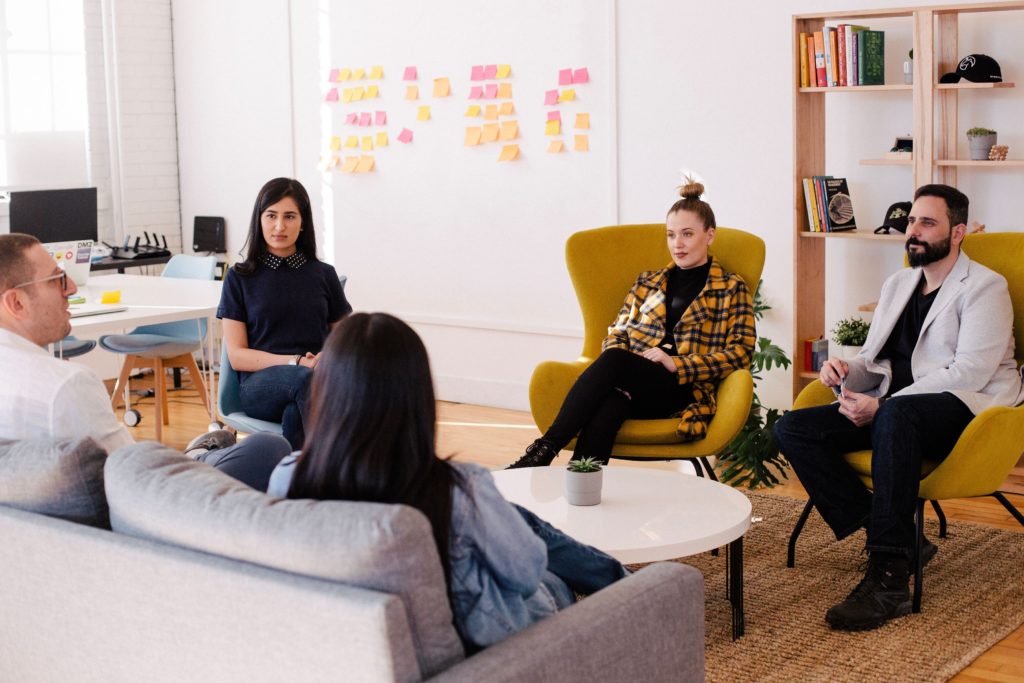Posted in Blog, Create, Grow, Lead by Jo North
Do people behave differently when they are in groups? Insights into group dynamics for facilitators
Definition of group dynamics
The term group dynamics refers to the behaviors and psychology that create and influence the interactions of people within a group. It’s clearly an important consideration for facilitators because our role is to lead groups through a process to generate a target outcome, whilst also creating a great experience for participants. By understanding group dynamics, you’ll benefit from skill and insights that will elevate your confidence and impact.
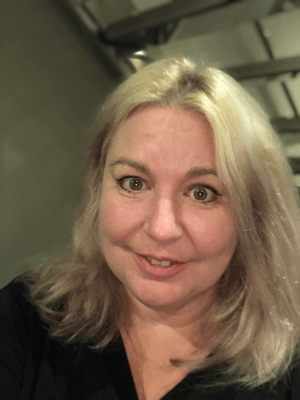
An introduction to our need for social connection
As human beings, we have all evolved with some level of need to connect socially with the people around us, as research by Matthew Lieberman and others demonstrates. Group dynamics have been an inherent part of our evolution.
I really recommend Matthew Lieberman’s book, Social. Why Our Brains are Wired to Connect. Liebermans’s social neuroscience research shows that our need to connect with other people is even more fundamental, more basic, than our need for food or shelter. Our brain uses its spare time to learn about the social world–other people and our relation to them. It is believed that we must commit 10,000 hours to master a skill. Each of us has spent 10,000 hours learning to make sense of people and groups by the time we are ten. The insights in the book are truly fascinating.
Some of us need and enjoy social connection more than others, of course, but the vast majority of us find it painful at least to some extent when we experience being socially excluded by the people around us who we perceive to have some importance for us. This evolutionary need for social connection is due to our reliance on adults for care as infants, and our need for the protection of the people around us throughout life against predators, scarcity of resources and the role of collaboration for survival.
Insights into group psychology
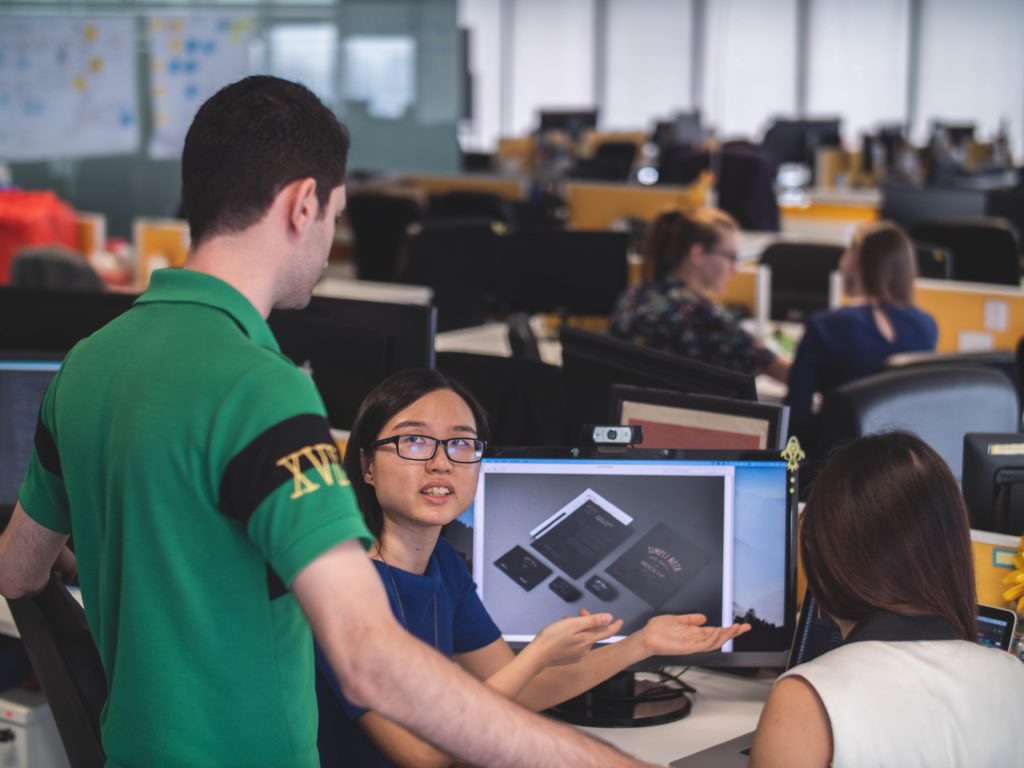
Many of us will also behave differently when we are in a larger group than when we are on our own, or just with a couple or a few people. Studies into group psychology show some interesting factors that create group dynamics:
- When we are in groups, we are consciously and unconsciously engaging in social comparison, assessing our position and views against those of other group members.
- Groups generate conformity. When we are in a group, we are likely to conform with how that group operates. This can be positive or negative, of course, depending on how the group behaves.
- Groups work to keep each other within the boundaries of what they consider to be acceptable behaviour. This is a process called normalisation that goes deeper than conformity because it also affects individual beliefs about what is acceptable, not just behaviours.
- Groups create polarisation when people with similar views come together, as in this Stanford research. Group polarisation is when groups make decisions that are more extreme than the original thoughts and views of the individual team members. If the group members are naturally risk averse, then the total group decision could be exceptionally cautious. If the group members include individuals who have a strong appetite for risk, then the final group decision could be a substantial gamble.
The good news is that social psychology also shows us that leaders can have a significant impact on the beliefs, behaviours and decision-making of groups. As a skilled facilitator, you’re able to role model the behaviours and approaches needed for a super-effective collaborative event, moderate when necessary and set a positive tone and expectations. This creates the climate of psychological safety that is so necessary for people in groups to do their best work and leads to high-performance group dynamics.
Creativity, group dynamics and social context
Csikszentmihalyi identified that creativity is only recognised and acknowledged within the social context that it exists within. Creativity depends not just on the individual creativity of those who have new ideas, but also on how receptive the surrounding organisation is to those new ideas.
This idea is very relevant in the context your facilitation because individuals operate within the ‘community’, or group dynamics, of their employing organisation, team or community. The receptiveness of the other delegates as a ‘community’ – even if just as a ‘pop up’ community for the duration of your event – to the differing creativity of individuals will influence how successfully innovative, useful, distinctive and commercial the outputs from your session will be.
In addition, individual creativity fuels group innovation, which in turns impacts on group creativity as a mutually reinforcing circle. Creativity is an antecedent to innovation – i.e. appropriate ideas and opportunities need to be recognised and communicated by individuals in order for the ideas to be used in practice. Find out here How to Be More Creative at Work.
Create a virtuous circle of innovation
Great workshops, sprints, away days and offsites work as a catalyst, mobilising the ideas, motivation and resources of the group and activating its management practices to achieve the desired innovation outcome. And as the group – and wider organisation – enjoy and gain confidence from an innovation event’s successful generation of beneficial organisational outcomes, it is likely to become more receptive to further innovation initiatives. This in turn may also be catalytic in motivating workshop delegates to propose and effect still more innovation opportunities to the organisation, creating a virtuous circle.

To ignite this positive, virtuous cycle of innovation through your facilitation is an outstanding achievement.
Innovation culture and action
By intentionally and deliberately designing in activities and approaches that support an innovation culture in your events, you will optimise the potential for your events to be as successful as possible. Creating purposeful opportunities for delegates to interact with other people who interest and excite them will produce stimulating exchanges that inspire and energise the thinking of everyone participating. Group dynamics become challenging in a positive, supported way and the whole process stretching and enjoyable at the same time.
Throughout the event, support your delegates in understanding where their contributions fit into the overall innovation effort, create opportunities for them to connect and build understanding of different perspectives, as well as to support and creatively and positively challenge each other.
I have facilitated events, however, in which delegates have had very little faith that anything would be done or changed as a result of their time and ideas. The participants, usually employees working in the same organisation, have been to numerous other events in the past, facilitated by others, but their bosses at the time chose not to do anything with the outputs. This is quite a tough challenge in some ways because, although people do want to contribute and influence positive change, it saddens and frustrates them that no-one seems to be listening to their ideas.
Support your delegates by helping to make stuff happen
Find out as much as possible about your client’s history of innovation activities and workshops, and if in the past not much has come from previous events, make sure that the person or people who commission you to facilitate are genuinely committed to taking some action as a result of the event.
If possible, ensure that they also attend the event – at least in part – and explain to people how and why things will be different this time.
Do your homework and be firm that you and your direct client will need to work together to successfully reassure delegates that what has happened before definitely won’t happen again. And after the event follow-up to help ensure that the promised actions are actually taking place.
As Rosabeth Moss-Kanter writes:
“When environments and structures are hospitable to innovation, people’s natural inventiveness and power skills can make almost anything happen.”
Structure your workshop agenda and activities to support group dynamics and innovation
Using the targeted, collaborative activities in my free download – Your DIY Awayday Toolkit – and the extensive library of resources in my free Content Studio – will help you ensure that the structure and content of your events are well-designed to influence and shape a positive innovation culture. In addition, you can support it by what you encourage your delegates to do and how you suggest they work. I’d also love you to come and join me and other like-minded, supportive facilitators in my free private Facebook Group, Idea Time for Workshop Facilitators.
Encourage delegates to have lots of ideas, and to separate the processes of idea generation and idea evaluation. Judging ideas too early doesn’t give them room to breathe and evolve, and cuts off the ‘stepping stone’ process of one idea leading to another, and another, and so on.
This is known as idea proliferation.
Idea proliferation
Idea proliferation – or coming up with lots of ideas on an ongoing basis – is a really important ingredient of creativity.
Having lots of ideas helps your delegates to come up with even more ideas! Here’s why:
- If you have 2 ideas – a and b – you can only derive 1 new idea from those which is ab.
- If you have 3 ideas – a, b, and c – you can derive 4 new ideas which are ab, ac, bc, and abc.
- If you have 4 ideas – a, b, c, and d – you can then derive 11 new ideas which are ab, ac, ad, bc, bd, cd, abc, abd, acd, bcd, and abcd.
To give you clearer picture, here are the numbers above and some more:
- 2 ideas can generate 1 new ideas.
- 3 ideas can generate 4 new ideas.
- 4 ideas can generate 11 new ideas.
- 5 ideas can generate 26 new ideas, and so on.
Great technique for idea proliferation – Random Mix and Match
An innovation technique for idea proliferation that I sometimes use which is inspired by the scientific investigation system called morphological analysis, is ‘random mix and match’.
Ask delegates to collate all their ideas and put them into random pairs. Then ask them to come up with another set of completely fresh ideas inspired by each of those random pairs. Delegates usually come up with some surprisingly promising and creative ideas from this activity.
Group dynamics, creative tension and innovation
Creative tension is inevitable in most group dynamics.
In psychology, creative tension is a situation where difference ultimately gives rise to better ideas or outcomes. Working with diverse thinkers may be uncomfortable at times. It can feel like it’s not as smooth sailing as just working with people who think like us and ‘get’ us. However, as long as relationships and communications are managed intelligently and effectively, nurturing creative tension appropriately is great for business, and also provides a rich personal learning and development environment for the people involved. It’s the facilitator’s role to make sure that creative tension is leveraged positively and constructively to support delegates in generating better outputs from their collaboration.
It is of course great to see teams where co-operation and cohesiveness are valued and where the individuals are united by the desire to maintain good relationships between everyone. That said, teams who over-value conformity and consensus often perform less well than those in which the team members have diverse approaches and multiple perspectives. Creative tension is needed too for innovative thinking, to create alternative ideas and to challenge established mind-sets.
Understand that creative tension is very different from bickering. Creative tension is respectful argument about the work. Capable people don’t always agree on the best way to approach a problem, so disagreement is the only way for everyone’s opinions to get a fair hearing. As long as discussions have the project outcome at the centre, what you’re experiencing is probably positive creative tension. If it starts to get personal, targeted, blaming or petty it isn’t the sort of tension that we are after.
Of course, it’s not necessary to have creative tension at all times. It’s especially useful though when you are working on something really innovative or challenging.
Creative tension is especially useful when you are working on something really innovative or challenging. Click To Tweet
Top tips for facilitating creative tension
Here are some top tips for managing creative tension effectively.
Shared vision
Help delegates to create a shared vision based on what unites everyone involved. Commitment can then be achieved by framing decisions and actions within the shared vision.
Make everyone feel heard
Make sure that everyone feels heard and that their opinions, even if very different from those of others, are valued and respected. This means operating in alignment with shared core values that support your vision.
Be clear about the purpose of each activity – divergent and convergent thinking
Let people know when you need divergent or convergent thinking in your innovation process.
People have different creative thinking preferences – some really enjoy opening up ideas and exploring opportunities – divergent thinking.
Others want to identify options, agree a course of action and make things happen – convergent thinking.
Each of these is necessary at different stages of the innovation process, and as facilitator it helps to signpost what the purpose of each stage of your innovation process is throughout your event.
If the signposting isn’t present and delegates aren’t clear about the purpose of each activity, things can go less well. People can become frustrated with each other – and with you, the facilitator – and a few voices or options may dominate.
When people with differing divergent or convergent thinking preferences work in collaboration, the following can happen:
- The divergent thinker becomes frustrated with the convergent thinker and vice versa. One wants to play around with ideas and scenarios, the other wants to clarify and focus. When more than two people are collaborating, obviously things can become even more complicated.
- The divergent and convergent thinkers both recognise that they each bring a different and valuable perspective and work together really well. They challenge each other in a formative way, develop consensus between them and create a positive outcome for the project.
And of course, there are lots of variations in between these two scenarios!
Here are a couple of examples of how you can signpost the purpose of activities:
- ‘Can we spend some time coming up with ideas – we will critique them later. For now, let’s get them all out there’ This prevents divergent thinkers getting shot down in flames by convergent thinkers every time they come up with an idea.
- ‘Great – we have loads of options there. Let’s stop now and work through them to see which ones we might want to take forward’ This prevents divergent thinkers coming up with so many ideas that you don’t make progress and allows the convergent thinkers to prioritise and organise.
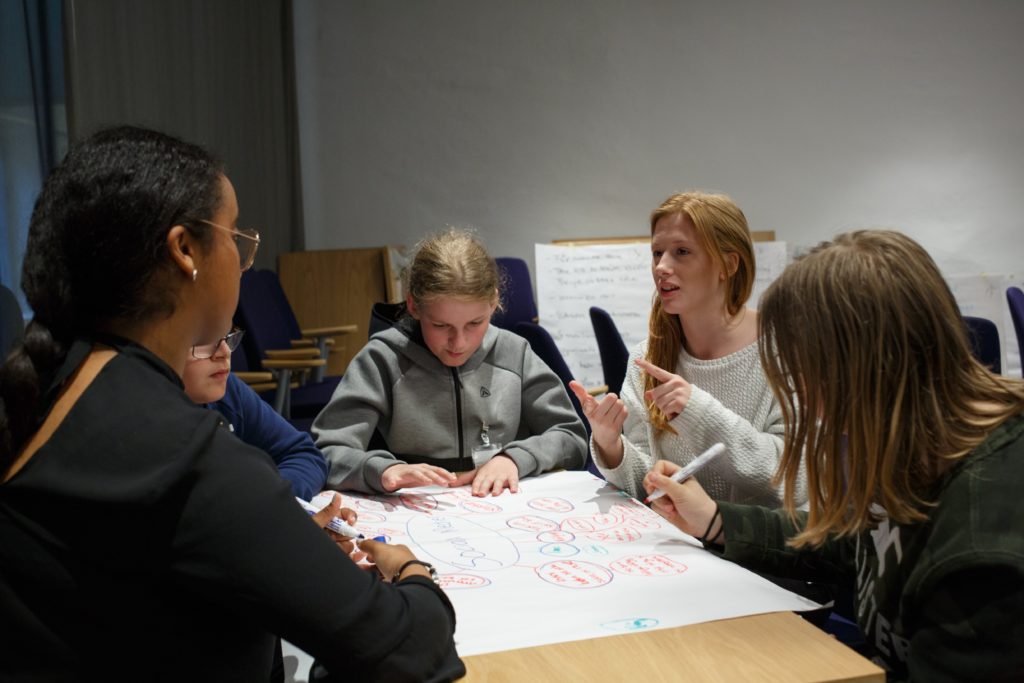
A couple more perspectives on creative tension
In his work ‘Creativity’, Robert Frit provides a really interesting perspective on creative tension:
‘I call the relationship between the vision and current reality structural tension. During the creative process, you have an eye on where you want to go, and you also have an eye on where you currently are.
There will always be structural tension in the beginning of the creative process, for there will always be a discrepancy between what you want and what you have. Why? Because creators bring into being creations that do not yet exist. Structural tension is a fundamental principle in the creative process. In fact, part of your job as a creator is to form this tension.’
Peter Senge in his book ‘The Fifth Discipline’ writes:
‘The gap between vision and current reality is also a source of energy. If there were no gap, there would be no need for any action to move towards the vision. We call this gap creative tension.’
In his ‘Letter from a Birmingham Jail’, Martin Luther King said:
‘Nonviolent direct action seeks to create such a crisis and establish such creative tension that a community that has constantly refused to negotiate is forced to confront the issue…I must confess that I am not afraid of the word, tension. I have earnestly worked and preached against violent tension, but there is a type of constructive tension that is necessary for growth…the purpose of direct action is to create a situation so crisis-packed that it will inevitable open the door to negotiation.’
Martin Luther King
The important point overall is for the facilitator to become comfortable with delegates being uncomfortable at some points during the event process, and to help delegates to do the same.
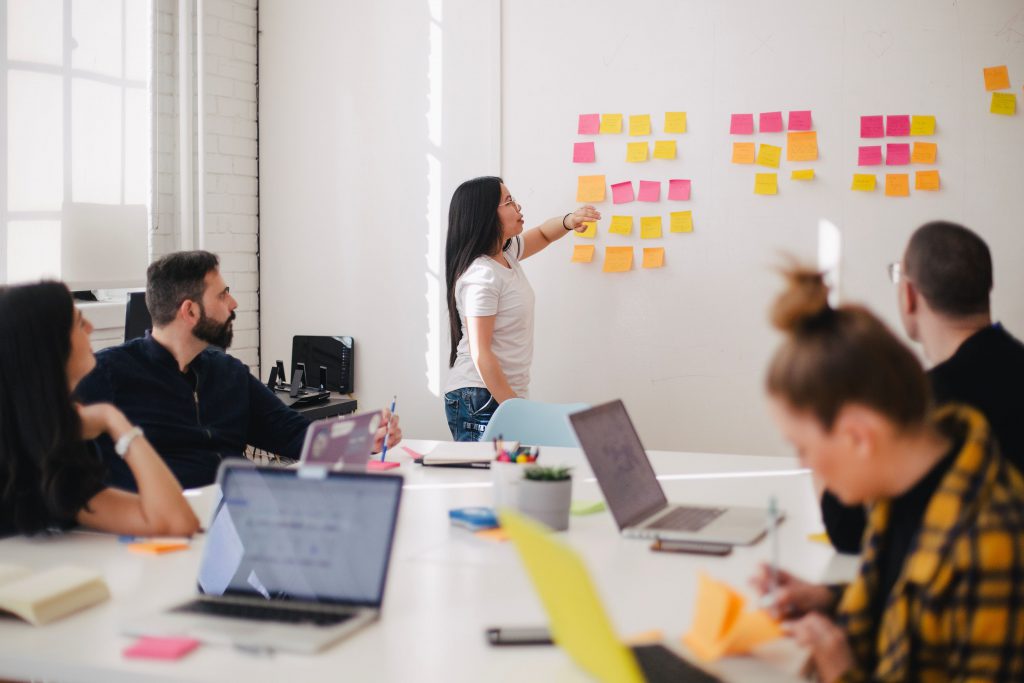
Fun and enjoyment
Although we have been focusing on creative tension, this does not have to be at the expense of delegates having fun and experiencing enjoyment throughout the event. Quite the opposite, in fact. Numerous research studies have shown how playfulness supports innovation, especially during the idea generation stage, and the positivity created by a relaxed, friendly, engaging and fun approach actually makes those times of creative tension much easier, because of the relationships formed and the understanding created.
Remember that as facilitator your role is to create an experience, as well as generate a result, and that your result will be far more successful if the experience is great.
Creative tension can have a playful and relaxed feeling about it, too, and the group can actually enjoy hearing diverse perspectives and relish the challenge of wrestling with making them all work to achieve an even better outcome.
Make sure that you weave purposeful fun throughout your event design to prevent your event becoming too heavy and bogged down in slavishly fighting your way through a process. You will find some examples of activities that help with this in my articles here on Icebreakers and Energizers. You will also find many, many more when you join my free private Facebook group, Idea Time for Workshop Facilitators.
What next?
I do hope that you enjoy using these suggestions in your sessions and find them helpful. I’d love to hear about any additional questions of ideas that you have about group dynamics and creative tension.
It’s SO important to make every event count, engage your stakeholders and participants throughout your innovation journey, and keep your activities fresh, stimulating and effective.
If you’d like to continue to design workshops and sessions that will make the most difference to your projects, and get your team or stakeholder network on board so that you can get results – efficiently, creatively and effectively – why not have a look at my YouTube Channel here.
Do people behave differently when they are in groups? Dr. Jo North shares her expertise and experience over on the Idea Talk blog. Click To Tweet
